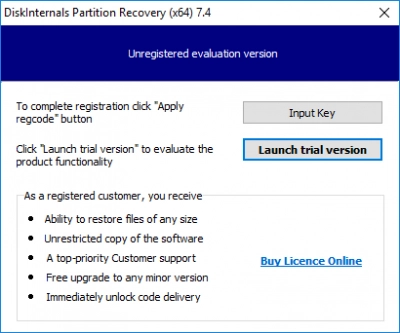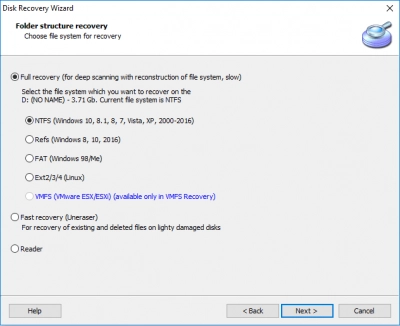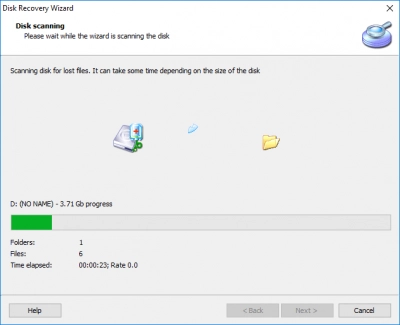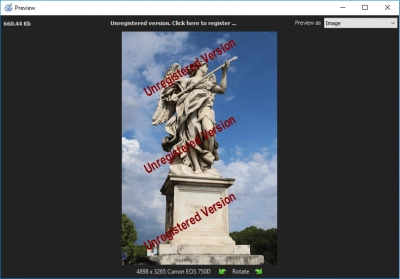How to Recover Files from Corrupted WD MY Passport Hard Drive
In the age of digital technology, data storage devices have become an integral part of our daily lives. From personal memories to work-related files, we rely heavily on these devices to store and manage our data.
Among these devices, Western Digital's My Passport hard drive is a popular choice for many users due to its portability and storage capacity. However, despite their reliability, these devices are not immune to data loss, which can occur due to various reasons such as accidental deletion, formatting errors, or hardware malfunctions.
In this article, we will explore the process of recovering data from a WD My Passport hard drive and provide some useful tips to help you minimize the risk of data loss in the future.
What Is WD My Passport?
The WD My Passport is a line of external hard drives produced by Western Digital Corporation, one of the leading manufacturers of computer storage devices. These hard drives are designed to provide users with a portable and secure way to store and backup their digital data. The My Passport hard drives come in various storage capacities, ranging from 1TB to 5TB, and are available in different colors and designs to suit the user's personal preferences. These hard drives are compatible with both Windows and macOS operating systems, and they can be easily connected to a computer or other devices through a USB interface. With their durable build quality and reliable performance, WD My Passport hard drives are a popular choice for individuals, students, professionals, and businesses looking for a cost-effective and convenient way to store and manage their data.
Is It Possible to Recover Data from WD My Passport?
Yes, it is possible to recover data from a WD My Passport hard drive in case of data loss. There are various methods and tools available for data recovery, but the success of the recovery process depends on the cause and extent of data loss.
If the data loss is due to accidental deletion, formatting errors, or virus attacks, the data recovery process is relatively simple and can be done using data recovery software. These software programs are designed to scan the hard drive for lost or damaged data and recover it in its original form.
However, if the data loss is due to physical damage to the hard drive, such as a malfunctioning head or damaged platters, the recovery process can be more challenging and may require the assistance of a professional data recovery service. These services use specialized tools and techniques to recover data from physically damaged hard drives.
It's important to note that in any data loss scenario, the first step is to stop using the WD My Passport hard drive immediately to prevent further damage or overwriting of lost data. With prompt action and the right approach, there's a high chance of recovering data from a WD My Passport hard drive.
Main Situations When You Need to Perform WD My Passport Data Recovery
- Accidental deletion: You may accidentally delete important files or folders from your WD My Passport hard drive, and then realize later that you need them.
- Formatting errors: Sometimes, you may accidentally format your WD My Passport hard drive or perform a factory reset, which can result in the loss of all data stored on it.
- Virus attacks: A virus or malware attack can corrupt the files on your WD My Passport hard drive or even cause it to stop working altogether.
- Physical damage: Physical damage to your WD My Passport hard drive, such as dropping it or exposing it to water or extreme temperatures, can cause the hard drive to malfunction and result in data loss.
- File system corruption: If the file system of your WD My Passport hard drive gets corrupted, you may not be able to access your files, and data recovery may be necessary.
In any of these situations, data recovery can help retrieve your lost or inaccessible data from your WD My Passport hard drive. It's important to stop using the hard drive immediately to avoid further damage and seek professional help if needed.
How To Retrieve Files From WD Passport External Hard Drive on Windows
1. Using a Data Recovery Software
To retrieve files from a WD Passport External Hard Drive on Windows using DiskInternals Partition Recovery, please follow the steps below:
- Download and install DiskInternals Partition Recovery software on your Windows computer.
- Connect your WD Passport External Hard Drive to your computer and launch the software.
- Select your external hard drive from the list of available drives displayed in the software interface.
- Click on the "Scan" button to start the scanning process. The software will scan your external hard drive for all deleted or lost files.
- Once the scanning process is complete, you will be able to see a list of all the files that can be recovered. You can use the search bar to locate specific files.
- Select the files you want to recover and click on the "Recovery" button.
- Choose the location where you want to save the recovered files. It is recommended that you choose a different drive than the one you are recovering files from.
- Wait for the software to complete the recovery process. The time taken will depend on the number and size of files you are recovering.
- Once the recovery process is complete, you can go to the location you selected to view the recovered files.




Note: It is important to avoid writing new data to the WD Passport External Hard Drive until the recovery process is complete to prevent overwriting the lost or deleted files.
2. Restore Files from a WD Drive using Windows File Recovery Tool
- Connect your WD drive to your Windows computer.
- Open the Windows File Recovery tool. You can do this by searching for "File Recovery" in the Windows search bar and clicking on "Windows File Recovery".
- In the Windows File Recovery tool, select the option "NTFS" if your WD drive is formatted with the NTFS file system, or select "FAT" if it's formatted with the FAT file system.
- Next, enter the command "winfr source-drive: destination-drive: /switches" in the command prompt, replacing "source-drive" with the drive letter of your WD drive and "destination-drive" with the location where you want to restore the files.
- You can use various switches with the command to specify the types of files you want to recover. For example, you can use "/n" to recover only files that have not been overwritten, "/y" to automatically overwrite any existing files with the same name, and "/x" to exclude certain file types.
- Press Enter to run the command and wait for the Windows File Recovery tool to scan your WD drive and restore the files to the specified location.
Note that the Windows File Recovery tool is only available on Windows 10 version 2004 or later. Additionally, the success of the file recovery process depends on the state of the WD drive and the extent of damage or corruption to the files. It's always recommended to backup your important files regularly to avoid data loss.
FAQ
How to recover data from an unrecognized WD My Passport Drive?
- Connect the WD My Passport drive to your computer and make sure it is properly connected.
- Open Disk Management on your computer by pressing Windows Key + X and then selecting Disk Management.
- Find the WD My Passport drive in the list of drives. If the drive is not recognized, it may appear as unallocated space or may not appear at all.
- If the drive appears as unallocated space, you can try to recover the partition. To do this, you can use a partition recovery software like DiskInternals Partition Recovery.
- Download and install the software, then launch it and select the WD My Passport drive from the list of available drives.
- Follow the on-screen instructions to scan the drive and recover the partition. If successful, the drive should now appear in Disk Management and your files should be accessible.
How to restore WD My Passport to factory settings?
- Connect the WD My Passport drive to your computer.
- Open Windows File Explorer and locate the WD My Passport drive.
- Right-click on the drive and select "Format".
- In the "Format" window, select the file system as "NTFS" and allocation unit size as "Default allocation size".
- Check the box next to "Perform a quick format" and then click on "Start".
- Wait for the formatting process to complete.
- Once the formatting process is complete, your WD My Passport drive will be restored to its factory settings.
Is it possible to recover data from a formatted WD My Passport?
Yes, it is possible to recover data from a formatted WD My Passport drive using data recovery software such as DiskInternals Partition Recovery or similar tools.
When you format a drive, the file system is erased and the data becomes inaccessible. However, the data is not completely erased from the drive, and can be recovered using specialized software that can scan the drive and recover the lost files.
DiskInternals Partition Recovery is a powerful tool that can recover lost data from formatted, damaged, or deleted partitions. It supports a wide range of file systems including NTFS, FAT, exFAT, and HFS+.
How do I transfer my passport to my new computer?
- Connect your WD My Passport drive to your old computer.
- Copy all the files and folders you want to transfer to your new computer onto the WD My Passport drive.
- Safely eject the WD My Passport drive from your old computer.
- Connect the WD My Passport drive to your new computer.
- Open Windows File Explorer and locate the WD My Passport drive.
- Copy the files and folders you want to transfer from the WD My Passport drive to your new computer.
Note: If you are transferring a large amount of data, it may be faster to use an external hard drive docking station or an external hard drive enclosure with a SATA to USB adapter. This will allow you to connect the WD My Passport drive directly to your new computer's motherboard and transfer files at a faster speed.
How do I fix my Western Digital passport?
1. Check your connections: Ensure that the USB cable is properly connected to both the Western Digital Passport and your computer. Try connecting the drive to a different USB port on your computer or using a different cable to rule out any issues with the cable or port.
2. Check the power source: If your Western Digital Passport is not receiving power, it may not function properly. Make sure that the drive is plugged into a power source if it requires one.
3. Run a diagnostic test: Western Digital provides a diagnostic tool called Data Lifeguard Diagnostics that you can use to check for any hardware issues with your drive. You can download this tool from the Western Digital website.
4. Check for drive errors: If you are experiencing issues with accessing data on your Western Digital Passport, you can try running a disk check. On Windows, you can right-click on the drive in File Explorer, select Properties, and then go to the Tools tab to run a disk check. On Mac, you can use the Disk Utility tool to run First Aid on the drive.
5. Format the drive: If you are still experiencing issues with your Western Digital Passport, you may need to format the drive. Keep in mind that formatting the drive will erase all data on it, so be sure to back up any important data before proceeding.
Can WD hard disk be repaired?
In some cases, a Western Digital hard disk can be repaired, but this will depend on the nature of the issue. Here are some common issues that can occur with a hard disk and whether they can be repaired:
1. Logical errors: Logical errors occur when there is an issue with the file system on the hard disk. These can often be fixed by running disk repair tools, such as chkdsk on Windows or fsck on macOS.
2. Bad sectors: Bad sectors occur when a portion of the hard disk becomes unreadable. This can be caused by physical damage to the disk or software errors. In some cases, bad sectors can be repaired by using disk repair tools or by reformatting the drive. However, if the bad sectors are caused by physical damage, the drive may need to be replaced.
3. Mechanical failure: Mechanical failure occurs when there is physical damage to the hard disk, such as a broken head or motor. In these cases, the drive will need to be replaced or sent to a professional data recovery service for repair.
It's important to note that attempting to repair a hard disk yourself can be risky and can potentially cause further damage to the drive. If you're not sure how to fix the issue or if the drive contains important data, it's best to consult a professional data recovery service.
